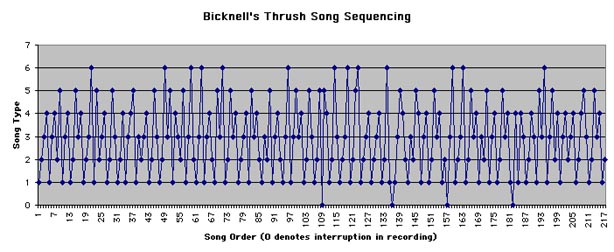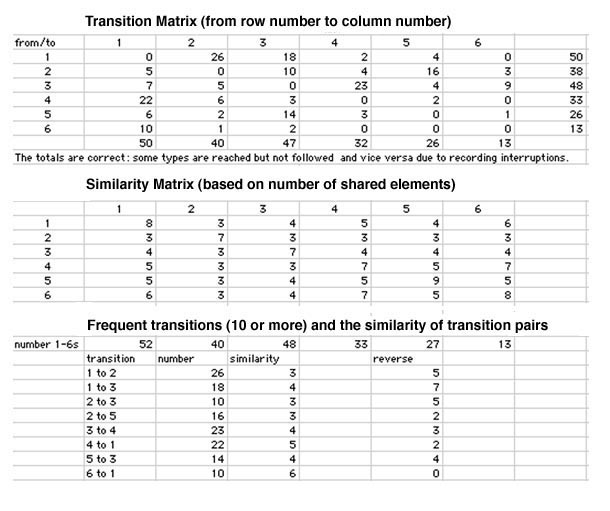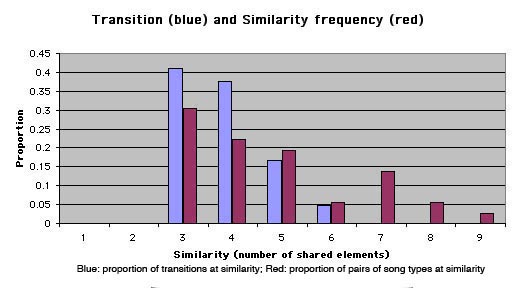
DELIVERY OF SONG TYPES
One bird, bird 2, light green, light green, was recorded singing for around twenty minutes. He delivered various calls and 214 songs of 6 types Three of the types were sung with roughly the same frequency: type 1, 52 times, types 2 and 3, 40 and 48 times, respectively. Types 4, 5 and 6 were sung 33, 27 and 13 times, respectively. No song type was sung twice in succession. Some types had prefixes that were sometimes absent, and some types were sung only in part occasionally. The following charts the delivery of types. Zero marks an interruption in recording.
 |
STATISTICS OF DELIVERY
 |
|
Note that there is a strong directional preference for transition; the reverse column shows the number of transitions in the reverse direction. For example, there are 26 transitions from song type 1 to song type 2, but only 5 from 2 to 1.
|
 |
|
This relates the frequency of transitions of the different similarities (number of shared elements between source and destination songs of transition, from 3 to 6; no transitions share 7 to 9 elements.) It shows a preference for changing to a song with few shared components: 80% of transitions are between songs having 3 or 4 shared elements while only 53% of the possibilities are between songs having 3 or 4 shared elements. The red bar is the probability of a transition chosen at random to consist of a pair with that similarity. If random choice were the case the two bars would be close to the same height. By chance, i.e., linearly random, the proportion of transitions between pairs having similarities 3 and 4 would be about half the transitions; instead they comprise close to 80%. Similarities 7, 8 and 9 are similarities of types with themselves with
one exception (types 6 and 4 have similarity 7 and no transition in either
direction). The lack of blue bars here denotes the fact that a song type
never follows itself. Even if same to same transitions are not considered
possible, the proportion of transitions possible between pairs of similarities
of 3 or 4 would be around 64%, much less than 80%. Thus avoiding same
to same transitions accounts for only part of the preference for transitions
to dissimilar songs. |